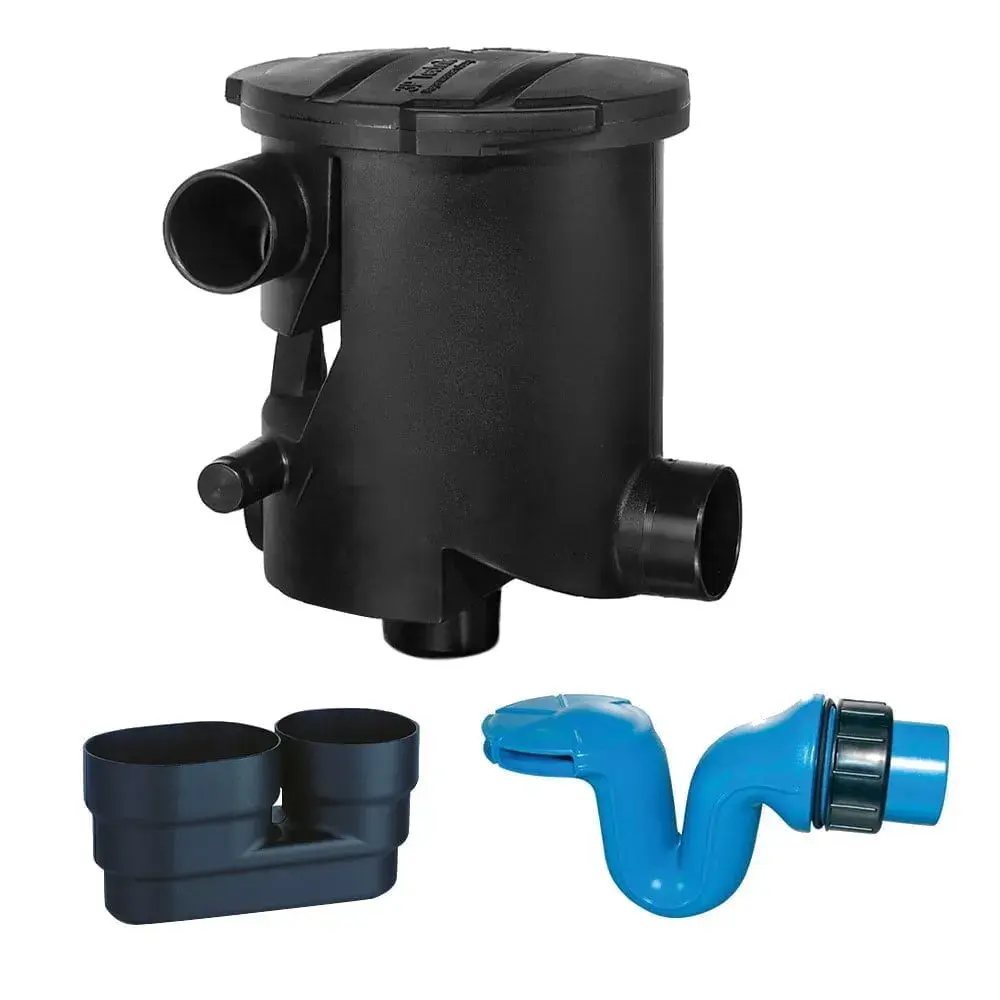
Rainwater harvesting systems can cut down water bills and improve sustainability in a wide range of commercial and industrial settings. This no-nonsense option is transforming the way we understand our relationship with water. Here’s how a commercial rainwater harvesting system works.
A Logical Idea
If you’ve ever watched rainwater pouring out of a drainpipe or spilling off a roof, you may have wondered where it goes. Much of it ends up in the nearest reservoir, where the local water company will clean it and charge you to use it. Rainwater harvesting cuts out the middleman, giving businesses control over the water used on their property or land. Harvesting involves collecting, storing, and using the water for various purposes. Almost everything can be taken care of by recycled rainwater, including washing, operating appliances, and feeding livestock. There are lots of different types of set-ups, including gravity systems and pumped systems.
Keeping It Clean
Water contains many organic ingredients. Most of these are harmless, but some of them can cause health problems for humans and animals, so safe water collection is a several-stage process. Rainwater harvesting systems channel water through a downpipe and into a filtration system, removing any dirt, debris, and contaminants – essential in urban environments in which rainwater can pick up airborne particulate matter from cars.
The clean water is then stored in an underground or overground tank from which it can be re-used. A suction hose draws the water from just below the surface where it is freshest, and this can be used to feed taps, showers, washing machines, and toilet cisterns, among other uses. Tanks are manufactured to form a formidable barrier to bacteria and algae spores, offering a very safe option for water storage.
Surprising Benefits
One of the main reasons that commercial property owners and businesses invest in a rainwater harvesting system is that it reduces water bills, often by up to 50%. Many research articles explain the financial benefits of reducing dependency on the grid by harvesting rainwater, and studies also show that there are multiple additional benefits. The approach is very useful for reducing the risk of rainwater overwhelming the drainage system and causing flooding in below-street level storage areas, offices, car parks, and basements, for instance.
Working In Harmony With The Grid
Rainwater harvesting systems are designed to switch back and forth between mains water and their own supply depending on availability, so there is no risk of the taps running dry during a heatwave. Professional help can also ensure that each property has the right set-up. At Enduramaxx, we supply tanks from 1,000 to 30,000 litres in volume, available for both below ground and above ground installations. Our team can help calculate the volume of rainwater you can expect, and the amount that you require, and ensure that you find the perfect match.
Find Out More
If you want to learn more about the benefits of rainwater harvesting for your business, please call Enduramaxx today on 01778 5628810.
Image Source: Pixabay
Posts By Topics
- Blog (303)
- Chemical Storage Tanks (118)
- Chemical Dosing Tanks (114)
- Chemical Tanks (114)
- Water Tanks (58)
- Rainwater Harvesting Tanks (43)
- Vertical Rainwater Tanks (31)
- Vertical Storage Tanks (31)
- Cone Bottom Tanks (19)
- Conical Cone Tanks (18)
- Rainwater Harvesting (17)
- Water Bowsers (15)
- Horizontal Tanks (14)
- Potable Water Tanks (13)
- Farming (9)
- Case Studies (8)
- Industrial Storage Tanks (7)
- Liquid Fertilser Storage Tanks (6)
- WRAS Approved Potable Tanks (6)
- Wine and Beer Production (6)
- Horizontal Transport Tanks (5)
- Microbrewery (5)
- Rainwater (5)
- Category 5 Break Tanks (4)
- Cider Production (4)
- Mixer Tanks (4)
- Molasses Tanks (4)
- Polyethylene tanks (4)
- Rainwater Filter Kits (4)
- SPECIALIST & BESPOKE TANKS (4)
- Bunded Tanks (3)
- Slimline Tanks (3)
- WRAS Approved (3)
- Clarification Tanks (2)
- Crosslinked Polymer Tanks (XLPE) (2)
- Fertiliser Tanks (2)
- Sump Tanks (2)
- Tank Installation (2)
- Water Butt (2)
- underground water tanks (2)
- ACCESSORIES & FITTINGS (1)
- ATV & UTV SPRAYING UNITS (1)
- Above Ground Effluent Tanks (1)
- Bespoke Tank Frames (1)
- Category 5 Turret (1)
- Caustic Soda Tanks (1)
- Closed Top Bunded Tanks (1)
- Craft beer (1)
- Effluent Tanks (1)
- Enduramaxx (1)
- Ferric Chloride Tanks (1)
- Fire Safety Regulations (1)
- Fire Sprinkler Water Storage Tanks (1)
- Industrial Water Tank (1)
- Open Top Bunded Tanks (1)
- Open Top Cone Tanks (1)
- Open Top Vertical Tanks (1)
- Polyethylene Potable Water Tanks (1)
- Polyvinylidene Fluoride (PVDF) Tanks (1)
- Polyvinylidene Fluoride Tanks (PVDF) (1)
- Pressure Washers (1)
- Pro Series Spot Sprayers (1)
- RWH (1)
- Sodium Hydroxide Storage Tanks (1)
- Sprayer Fill-up Tanks (1)
- Uncategorised (1)
- liquid fertiliser tank (1)
Sign up to the newsletter
enduramaxx.marketing
Related Posts
Bespoke access ladders for tanks | Enduramaxx
Bespoke access ladders for tanks, Enduramaxx were recently asked to design an access platform for...
How Water Sustainability Reduces Golf Course’s Environmental Footprint
Amid the relaxing green landscape of a golf course is an underlying environmental challenge that...
Exploring The Pros And Cons Of Soft Water vs Hard Water
The terms ‘soft’ and ‘hard’ refers to the mineral content in water, specifically the concentration...
Related Products
From £1,080.00 inc. VAT
£900.00 exc. VAT
From £1,344.00 inc. VAT
£1,120.00 exc. VAT
From £768.00 inc. VAT
£640.00 exc. VAT
£480.00 inc. VAT
£400.00 exc. VAT






